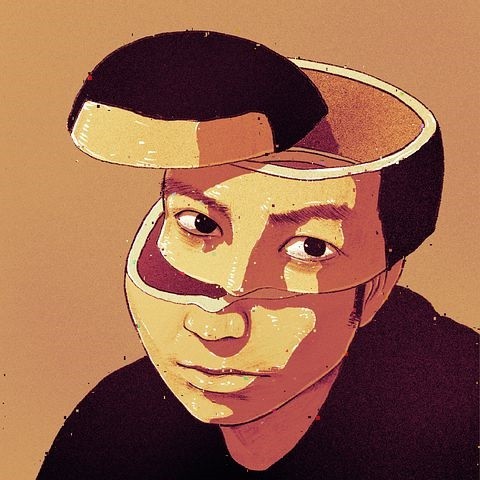Latest Research Reveals Chronic Pain is on the Rise

This study has documented steep, sustained, and pervasive increases in chronic pain among Americans across the adult life span. From the first study being discussed today.
I want you to listen to this astounding quote from one of the authors of the study we are discussing today, Dr. Hanna Grol-Prokopczyk, from the April issue of the Duke University Press journal, Demography (Pain Trends Among American Adults, 2002–2018: Patterns, Disparities, and Correlates). The quote was actually taken from MDLinx (Americans are Increasingly Experiencing Chronic Pain).
“We looked at the data from every available perspective including age, gender, race, ethnicity, education, and income, but the results were always the same: There was an increase in pain no matter how we classified the population. You might think that with medical advances we’d be getting healthier and experiencing less pain, but the data strongly suggest the exact opposite.”
Holy faltering fitness Batman, did you read that last sentence? I wrote a post on that very topic eight years ago that made this very point (GENERATIONAL HEALTH CONTINUES ITS LONG SLIDE). And oddly enough, in both cases, the authors were not really sure as to why. It’s not rocket science folks. While it’s true that Americans are living longer than ever, research continues to show that the last quarter century of their lives is spent coping with CHRONIC INFLAMMATORY DEGENERATIVE DISEASES.
And because chronic inflammation is so intimately related to chronic pain, Grol-Prokopczyk’s findings cannot in any way be considered “unexpected“. It’s that double whammy of the SAD (Standard American Diet) combined with terrible (SEDENTARY, STRESSED OUT, SEXLESS) lifestyles. Let’s take a peek at some of the conclusions of the latest chronic pain study.
The first thing you should know is what this research specifically looked at. The data came from the 2002–2018 National Health Interview Survey (over 440,000 were quizzed by the government), and looked at various forms or areas of chronic pain, including JOINT PAIN, LOW BACK PAIN, FACE PAIN, JAW PAIN, HEADACHES, and MIGRAINE HEADACHES in adults, aged 25-85. What did the authors say about these sites of chronic pain?
“Pain prevalence — already high at baseline — increased substantially during the study period, with the increase evident in all leading pain sites.”
Take a moment and digest this. The incidence of CHRONIC PAIN in the general population was already high when the study started. I have shown you that according to the experts, 100,000,000 (one hundred million) American adults deal with some sort of chronic pain-related issue.
Furthermore, although headaches (especially migraine headaches) might not always count as a musculoskeletal problem, musculoskeletal problems are exactly what their list is made up of. What about the millions of people who have chronic pain due to metabolic diseases such as CANCER or DIABETES or thousands of others? What about those with pain due to their AUTOIMMUNE DISEASE? It might be musculoskeletal but it very well might not.
I could wade through this study with you, giving you a myriad of shocking facts and figures, but am instead going to confine things to this statement…..
“We identified a cluster of salient intermediate and proximal correlates of the pain increases, which include psychological distress, alcohol use, body weight, and arthritis”
I am not going to go over everything, namely because I have spent a lot of time and energy on these topics (simply search my site). The authors mentioned what I believe is at the root of much of this increase in pain (as well as the already high levels of pain when the study started), not to mention the disease processes I mentioned — “inflammatory cytokines“.
If you want to know what CYTOKINES are I have lots of information on the topic. This means that if you want to start the process of solving your chronic pain, or at the very least, improving it, you must address sources of inflammation in your life. This involves both reducing whatever it is that is driving inflammation, and accentuating those that are anti-inflammatory. Fortunately, I have some ideas on both.
Ye Chronic Pain Solutions

The first thing that must be ascertained is whether or not your pain is true “chronic pain” (TYPE III PAIN that is often referred to universally as ‘CENTRAL SENSITIZATION‘) or whether it is Type II pain; pain that is being induced by some sort of on-going tissue damage (I COVERED THIS TOPIC YESTERDAY). The problem is, it is often difficult to know.
When I am not sure, I usually go ahead and treat the patient as though their problem were Type II. They will know after the first treatment, because if it is Type III, they won’t improve, or at least any improvement they receive will be short-lived. The Type II patient will typically see significant improvement, in many cases, immediately (TYPE II OR TYPE III PAIN?) that tends to last for a long time. Type II pain patients are almost exclusively whom I see and treat.
The second thing that needs to happen, regardless of the type or category of pain you are having is to deal with the underlying causes of inflammation in your life — remove them. After that (or better yet, concurrently) you will need to do be pro-actively against inflammation. In other words, as I stated earlier, it’s not enough to simply get rid of the major sources of inflammation in your life, you’ll need to take action steps that are anti-inflammatory (HERE IS A SIMPLE ONE FOR THOSE OF YOU WHO COOK OR SHOULD BE).
Realize that the medical community grasps this intimate relationship between inflammation and pain. Why do you think that NSAIDS are one of the most-used / prescribed classes of drugs in America? They work. Period. However, their side effect profile is such that long-term use will likely prove debilitating, and in many cases, deadly.
HERE is the link for starting this process yourself (DIY). Although most of it is common sense, some of it may involve things you have never heard of before, or at least thought of before in terms of resolving inflammation, relieving pain, and restoring health (HERE and HERE are simple but weird ones). Before we leave, let me quickly hit you with another major study that just came across my desk; relevant because it is heavily related to the way people (both doctors and patients) medicate chronic pain.
Chronic Pain & Sleeping Pills

Sleep disturbances are common and increasing in prevalence. The use of sleep medications has grown, and they are often used over a long period, despite the relative lack of evidence from randomised controlled trials.
The brand new issue of the British Medical Journal Open; Epidemiology Edition (Prescription Medications for Sleep Disturbances Among Midlife Women During 2 Years of Follow-up: A SWAN Retrospective Cohort Study) came to some interesting conclusions concerning a class of drug prescribed for lots of you; mostly women (frequently for CHRONIC FIBROMYALGIA PAIN). Here are some cherry-picked tidbits from the study.
As a side note, please realize that this class of drug IS MORE DANGEROUS DEADLY than most people realize — far more deadly.
- CHRONIC PAIN & SLEEPING PILLS; USAGE IS INCREASING: Because one of the four mentioned factors linked to increased usage of sleep aids is chronic pain, there are no surprises here. “Sleep disturbances are common, and an estimated 9 million adults in the USA report prescription medication use for this indication. The frequency of sleep medication use has increased since the 1990s. Sleep disorders are associated with many important chronic conditions, including diabetes, hypertension, pain and depression.” Realize that the other three factors fall into that class of diseases I discussed earlier, Chronic Inflammatory Degenerative or CID.
- CHRONIC PAIN & SLEEPING PILLS; MIDDLE AGED WOMEN ARE THE MARKET: The title of this study says it all. And once again, it’s middle aged women that are taking it on the chin. Why women of “middle” age? They are either still loosing blood every month (or are going thru ‘the change’). Most are raising children, are working outside the home, are running households, etc, etc, etc, which is leaving them stressed out mentally, physically, and emotionally. Not surprisingly, this same group (middle aged women) is also the most prone to contract any number of health issues, including autoimmune diseases. It’s also why you ALWAYS see middle-aged women in the TV ad, not being able to sleep until they take that wonderful (furry) medication.
- CHRONIC PAIN & SLEEPING PILLS; SHORT-TERM USE -VS- LONG-TERM USE: There are innumerable medications that seem to work well in the short term, but lose their effectiveness over time (NARCOTICS / OPIOIDS IS THE CLASSIC EXAMPLE, but ANTIBIOTICS are right there with). This is exactly what this team of Harvard researchers found. See quote under the Teddy Bear pic above.
- CHRONIC PAIN & SLEEPING PILLS; MOST ARE PRESCRIBED OFF-LABEL: OFF-LABEL simply means that a drug is being prescribed for something it was never studied for. I probably do not need to tell you that it is not only extremely common, it is heavily promoted by pharmaceutical sales reps for almost anything and everything. After talking about two classes of meds specifically created to induce sleep, the authors discussed the majority of what these women are prescribed for their INSOMNIA. “…and other agents mostly used off-label to promote sleep through a variety of other mechanisms.” In other words, these are the pills that say on the bottle, “do not operate heavy equipment while taking this medication.” How do they work? What is their mechanism of action? Who knows and who cares as long as they make you sleepy!
For my next bullet point, you will have to read the following quote.
“Randomised controlled trials demonstrate the short-term sleep benefits of many agents in these categories, with typical trials for these agents lasting only 12–24 weeks and often including fewer than 100 patients. One 8-month study of zolpidem found improved polysomnographic sleep parameters and subject assessments on two nights in month. While sleep medications are recommended for short courses, sleep disturbances may be chronic and many patients use these agents for long periods, sometimes intermittently and other times nightly.
Thus, data from typical practice would be useful for patients and clinicians if it included sleep medications used over several months in populations of patients with sleep disturbances; we found no such studies in the literature.”
- CHRONIC PAIN & SLEEPING PILLS; NO STUDIES ON LONG-TERM USAGE: This reminds me of THE PPI STOMACH ACID DRUGS that are constantly in the news these days for their side effects (they are also getting a lot of play as far as attorney’s advertisements for class-action suits as well). Even though this class of drug is recommended to be taken no more than a total of a couple months a year, I routinely see patients that have never been off of them in a quarter century. The quote above shows that the same phenomenon is likely taking place with sleeping pills. Not a single solitary study on long-term use of side effects. We don’t have to wonder why not after looking at my previous ‘deadly dangerous‘ link.
- CHRONIC PAIN & SLEEPING PILLS; THEY DON’T WORK LONG-TERM: Rather than me prattling on, here are the study’s cherry-picked conclusions. “Sleep disturbances are common and increasing in prevalence. The use of sleep medications has grown, and they are often used over a long period, despite the relative lack of evidence from studies. The current observational study does not support use of sleep medications over the long term, as there were no self-reported differences at 1 or 2 years of follow-up comparing sleep medication users with non-users. The lack of benefit associated with use of sleep medications in the population studied after 1 and 2 years should help inform clinicians and patients considering initiating pharmacological treatment for midlife women who have sleep complaints.” This was all determined after going back and finding over 2,500 women from previous studies between 1997-2016, doing questionnaires and exams, following them for two years, and then doing more questionnaires and exams.
My recommendations for whatever ails you are almost always the same. Take matters into your own hands.
I was reminded of this once again yesterday, when my early-morning, out of state patient told me, “I kept thinking that my doctors were eventually going to figure out a way to solve my problems for me.” Sometimes this happens. But more often than not, the harsh reality is that even if they are able to give you a real diagnosis (i.e. thank God you no longer have MUPS); them actually being able to do something ‘effective’ about it (chronic pain included) is highly unlikely.
Sure they can medicate you. But how ‘effective’ is that? You’ve probably already spent enough time on the MEDICAL MERRY-GO-ROUND to be able to answer this question ‘effectively’. Go back and read (or re-read) my article on solving your own problems — the diseases and chronic pain caused by chronic inflammation (I left a link earlier). Not everything in it will pertain to you, but it’s a great place to start. After all, you have to start somewhere. Why not start with something that doesn’t really cost you anything and tends to be ‘effective’ for the majority who engage.

2 Responses
Hey Doc,
When you talk about “middle aged women”, don’t forget that quite a few of them are probably also helping their aging parents. At the same time as whatever menopause is doing to them. It’s a sweet combo psychologically, as I recall. If you do the arithmetic, it’s pretty common.
Wow Suzanne, great catch. Spot on observation!